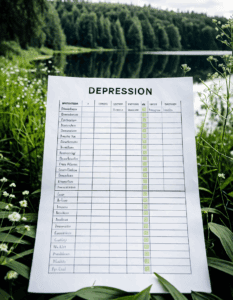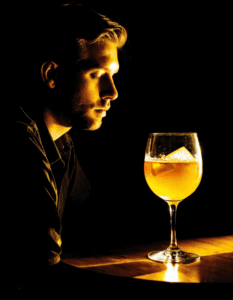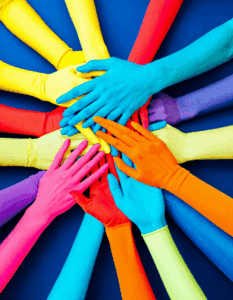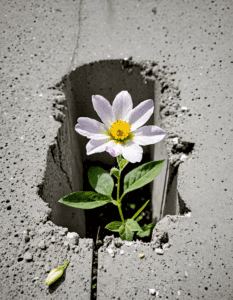## Women’S Unique Challenges In Addiction Overcoming Barriers
When we talk about addiction, it’s crucial to recognize women’s unique challenges in addiction. Societal stigma around addiction can be more intense for women compared to men. Layered with traditional gender roles, expectations often pressure women to be the perfect mother, daughter, or wife. This leaves little room for imperfection or vulnerability. Women who admit to having an addiction frequently face harsher judgment and social ostracism, often deterring them from seeking help. Cultural attitudes in many communities exacerbate this, imposing silent shackles of shame.
2. Barriers to Treatment Access
Women face unique logistical and emotional barriers when accessing addiction treatment:
- Childcare Responsibilities: Mothers, particularly single ones, may lack resources to leave their children in safe care while they attend rehab. The care of children becomes another obstacle, turning the prospect of treatment into a logistical nightmare.
- Financial Constraints: Wage disparities and job inequality mean women often have less disposable income to afford addiction treatment. The burden of financial strain becomes heavier when considering the essential costs of children’s needs, rent, and basic living expenses.
Despite these barriers, it’s critical to discuss resources like Addiction in rural Communities, which often spotlight similar struggles women face in these areas.
| Category | Challenges | Implications | Considerations for Treatment |
| Biological Factors | Differences in metabolism and body composition affect substance effects and dependency | Women may become addicted faster and suffer more physical health consequences | Gender-specific medical care; tailored detox programs |
| Mental Health | Higher rates of co-occurring mental health disorders such as anxiety and depression | Increased vulnerability to addiction and psychological distress | Integrated treatment addressing both addiction and mental health issues |
| Social Stigma | Greater societal judgment and shame associated with substance use among women | Reluctance to seek help; increased isolation | Support groups specifically for women; family therapy to address stigma |
| Family Responsibilities | Primary caregivers for children and relatives; fear of losing custody | Delay in seeking treatment due to child care responsibilities; fear of child welfare involvement | Providing child-care services at treatment facilities; family inclusion in therapy |
| Economic Factors | Lower average earnings and employment rates compared to men | Limited financial resources for treatment; higher stress levels | Sliding scale fees for treatment; employment assistance services |
| Trauma and Abuse | Higher rates of physical, sexual, and emotional abuse | Increased likelihood of using substances to cope with trauma | Trauma-informed care; Safe environment for therapy |
| Healthcare Access | Barriers such as lack of insurance, transportation, and female-focused treatment programs | Difficulty accessing timely and appropriate care | Mobile clinics; telehealth options; expanded insurance coverage |
| Social Support | Potential lack of support from partners or family members who may also be involved in substance use | Isolation and increased stress | Building strong support networks beyond family, involving community services |
3. The Impact of Trauma and Abuse
There is a strong correlation between experiences of trauma or abuse and substance use disorders among women:
- Domestic Violence: Women are statistically more likely to experience domestic violence, profoundly increasing their risk of developing addictions. The trauma from such violence makes substance use a coping mechanism for many victims.
- Sexual Abuse: Survivors of sexual abuse, like public figures Mila Kunis and Oprah Winfrey, may turn to substances to cope with unresolved trauma. This pattern is unfortunately common, highlighting the deep psychological wounds that foster addiction.
For those who need further insight, understanding Addiction in minority Communities can shed light on additional layers of adversity women face in these contexts.
4. Gender-Specific Health Issues
The biological and physiological differences mean that women’s unique challenges in addiction often manifest in particular health issues:
- Metabolism Differences: Women might metabolize certain substances faster or slower than men, which affects their rates of dependency and speed of recovery.
- Hormonal Cycles: Hormonal fluctuations can impact addiction patterns significantly. For instance, pregnancy and menopause are critical periods affecting substance use and recovery efficacy. These cycles bring about physiological changes that can exacerbate addiction or complicate recovery.
Moreover, certain gender-specific issues, such as Lgbtq+ addiction Issues, warrant specialized attention.
5. Mental Health and Co-occurring Disorders
Mental health issues can make addiction treatment more complex for women:
- Higher Rates of Depression and Anxiety: Women are more likely to suffer from clinical depression and anxiety, leading factors in substance abuse. These co-occurring disorders necessitate a comprehensive approach to treatment.
- Eating Disorders: Many women with substance use disorders also struggle with eating disorders. The interwoven nature of these conditions calls for treatment plans that address both issues simultaneously.
Online resources like the forums found on Reddit’s “Stop Drinking” subreddit provide a platform for women to seek advice and support amidst societal judgment.
6. Family Dynamics and Recovery
Family dynamics play a significant role in women’s addiction and recovery journeys:
- Caretaker Roles: Society often expects women to be primary caregivers, which includes nurturing even at the expense of their health. This overwhelming pressure can impede recovery or dissuade women from seeking help.
- Enabling Environments: Family members sometimes unknowingly enable addiction through denial or lack of support, much like what occurred with Demi Lovato before her publicized treatment.
The important message here is the impact of the family and the environment on supporting or hindering the recovery process.
7. Social Support Systems and Community Involvement
The presence or absence of social support systems can make or break recovery journeys for women:
- Community-Based Programs: Programs like Women for Sobriety and Sisters in Sobriety demonstrate that women benefit immensely from gender-specific support groups focusing on empowerment and unique challenges.
- Online Support: The rise of online communities, like those discussing the latest interest rate today mortgage, offers anonymous spaces for women to seek advice without societal backlash.
In addition, platforms like rooster fighter present empowering narratives that can inspire resilience among women.
Embracing Holistic and Inclusive Solutions
Addressing the women’s unique challenges in addiction necessitates a multi-faceted approach grounded in empathy, tailored treatment options, and supportive communities. Specialists must work collaboratively to dismantle societal stigmas and logistical barriers preventing women from accessing necessary help. Programs should be inclusive, acknowledging the spectrum of issues affecting women—from societal roles to physiological and psychological factors.
Mothers Against Addiction continues to lead this charge. By understanding these distinct challenges, we aim to pave the way for effective, compassionate recovery paths for women worldwide. Visit www.MothersAgainstAddiction.org to learn more about how we are committed to helping parents of children struggling with addiction or those who lost their loved ones.
For further inspiration and strength, check out 50 cent final lap tour; a journey of resilience and triumph. Every woman deserves a path free from judgment, full of healing, and abundant in support.
Women’s Unique Challenges in Addiction Barriers
Navigating the rough seas of addiction isn’t the same for everyone. Women’s unique challenges in addiction are multifaceted, tackling both physiological and social barriers. Did you know that women often face more intense cravings than men once they develop a dependence? Yep, and that makes recovery quite the uphill battle. Fascinating, right?
The Role of Hormones
Hormones, those pesky regulators, play a significant role in addiction patterns. For instance, research has shown that hormonal fluctuations can make women more susceptible to cravings and relapse. Hormones aren’t just for mood swings; they can make busting free from addiction as tricky as dodging today’s interest mortgage rates in a volatile market.
Social Stigmas
There’s also the weighty burden of social stigmas. Women often bear harsher judgment for substance abuse, leading many to hide their struggles. This can make seeking help feel like a clandestine operation. Fun fact: women’s addiction issues are less likely to be recognized and addressed, increasing the risk of long-term problems. If dealing with societal pressures doesn’t feel like trying to navigate a maze blindfolded, what else would? See, it’s like stumbling upon unfamiliar content such as Dick Fight island—it’s unexpected and unfathomable.
The Double Burden
Add parenting into the mix, and you have a real fixer-upper of challenges. Women are often primary caregivers and might struggle with guilt and fear of losing custody. They’re juggling not just their recovery but also the well-being of their children. Surprising fact: Women are more likely to relapse if they’re in roles as primary caregivers, thanks to the sheer stress and lack of support. Not exactly a walk in the park, right?
In short, understanding women’s unique challenges in addiction paints a vivid picture of why tailored approaches are crucial. From hormones to stigmas and the double-duty of caregiving, it’s clear that women face a different set of hurdles on the road to recovery. The more we know, the better we can support those fighting the good fight.

What are some of the challenges in treating addiction disorders?
Treating addiction disorders is tough because it’s not just about stopping drug or alcohol use; it involves tackling mental health issues, social factors like family problems, financial stress, and even legal troubles. What’s more, there are often physical health problems that need attention too.
Why is it important to study women’s issues in substance abuse?
Studying women’s issues in substance abuse is crucial because women often face unique challenges and barriers that men might not, such as higher rates of trauma, caregiver responsibilities, and societal stigma, all making it harder for them to get and stick with treatment.
What are the five recovery skills?
The five recovery skills typically include managing cravings, developing healthy coping strategies, building a supportive social network, setting realistic goals, and finding new activities to replace substance use.
What are some barriers that impact recovery?
Barriers that impact recovery can include stigma and shame, lack of social support, financial difficulties, mental health issues, and the availability of treatment options.
What is the main problem of addiction?
Addiction is primarily a brain disorder that affects the reward system, leading to compulsive behavior despite harmful consequences. It’s about more than just willpower; it’s a chronic disease that changes how the brain works.
What is the most important factor in substance abuse?
The most important factor in substance abuse is often the underlying issues like trauma, mental health disorders, or stress that drive someone to use substances in the first place.
What are the problems of substance abuse in?
The problems of substance abuse often include health complications, relationship issues, legal trouble, financial strain, and decreased productivity.
Why is it important to study female delinquency?
Studying female delinquency is important because it helps us understand the different pathways and risk factors for girls compared to boys, ultimately leading to more effective prevention and intervention strategies that are gender-responsive.
What are the 7 R’s of recovery?
The 7 R’s of recovery are Readiness, Resilience, Relationships, Responsibility, Resources, Hope (Renewal), and Routine.
What are the 3 R’s of recovery?
The 3 R’s of recovery are Refocus, Rebuild, and Reinforce. These steps remind us of the ongoing effort required to maintain recovery.
What are the 5 W’s in recovery?
The 5 W’s in recovery are Why (motivation), What (goals), When (timeline), Where (environment), and Who (support system).
What are three barriers to the treatment of substance use and anxiety disorders?
Three major barriers to the treatment of substance use and anxiety disorders include limited access to mental health services, financial constraints, and the stigma associated with seeking help for these issues.
What are the challenges of being a substance abuse counselor?
Being a substance abuse counselor is challenging because it requires managing high-stakes emotional situations, maintaining professional boundaries, and frequently confronting relapse, all while providing continuous support and motivation for clients.
What are some challenges in diagnosing process addictions?
Diagnosing process addictions (like gambling or internet addiction) can be tricky because they don’t involve a substance, making physical signs less obvious, and often the behavior can seem normal or even productive until it escalates.
What is the gap in substance abuse treatment?
The gap in substance abuse treatment often lies in the lack of tailored approaches for diverse populations, inadequate support for mental health co-conditions, and insufficient resources for long-term recovery and follow-up care.




























